Extinction of the endangered Key Largo woodrat seemed likely as recently as 2012. But thanks to years of work by two dedicated volunteers and recent enlightened management by the U.S. Fish and Wildlife Service, this subspecies of Florida woodrat is making a dramatic comeback.
The worst of its problems was and is free-ranging domestic cats. Another is its tiny native range — Key Largo, the first Florida key you hit driving south from the mainland.
“No one who lives here has ever seen the almighty woodrat,” complains Key Largo resident Spencer Slate, owner of nine cats and one of the many vocal critics of woodrat management. He’s almost right, and that’s a problem, too. Woodrats are secretive and nocturnal. If they were commonly seen, the public would fall in love with them the way it fell in love with, say, California’s inquisitive and highly visible island foxes.
Further hindering woodrat popularity is the unfortunate name. They are distinctly unratlike, sharing no close blood ties with the reviled and alien Norway rat and black rat from which they are easily distinguished by their rabbit-soft fur, large eyes and ears, long whiskers, white belly and furred tails.
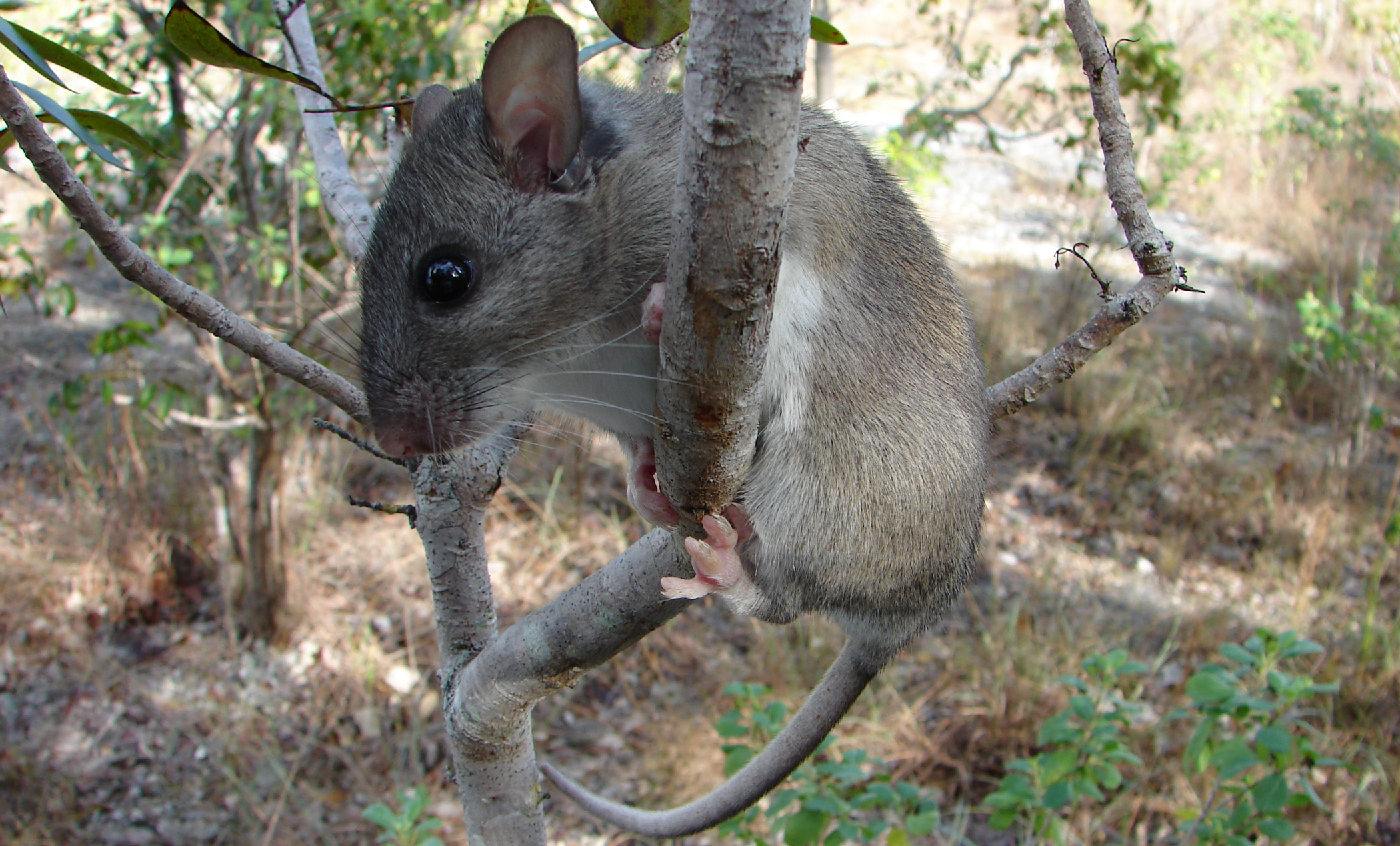
They are fastidious groomers; and in their stick houses, sometimes larger than a beaver lodge, they maintain a separate bathroom. They collect coins, bottle caps, belt buckles, golf balls, and other shiny objects. They are, in fact, a type of packrat, also an unfortunate name for these clean cousins of the white-footed mouse.
Two Key Largo residents who did fall in love with woodrats are Ralph DeGayner and his brother Clay. In 2004 Ralph asked Steve Klett, then manager of the island’s Crocodile Lake National Wildlife Refuge, if he could go see one. It was basically impossible, Klett accurately informed him. So Ralph asked if he and Clay could help live-trap woodrats. They trapped for six months, and never caught one.
In a peer-reviewed paper published last July in the journal Restoration Ecology Dr. Michael Cove, et al report evidence of “a negative relationship between the present distribution of [Key Largo] woodrats and proximity to a residential center [the Ocean Reef Club, a gated community of 5,000 residents] that supports free-ranging domestic cat feeding stations and the largest known trap-neuter-release (TNR) cat colony in Florida.” Dagny Johnson Key Largo Hammock Botanical State Park, adjacent to the Ocean Reef Club, had the highest Key Largo woodrat density a few years ago. Now it has the lowest.
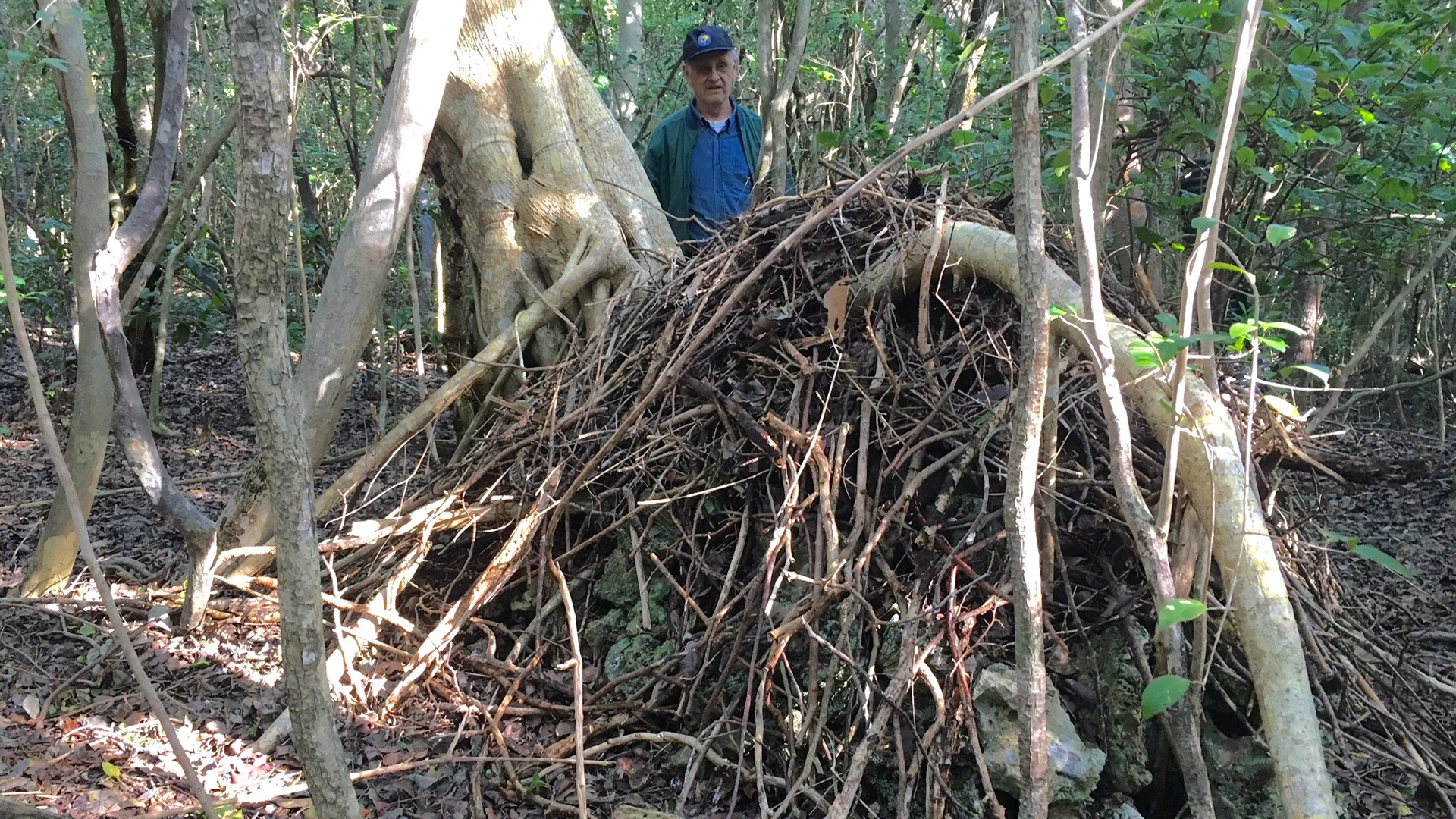
When woodrats drag heavy sticks to their houses they struggle and make noise, attracting cats. In the first years of the 21st Century researchers suddenly couldn’t find any woodrat stick houses. “That timing correlates with subsidizing free-ranging cats with feeding stations, trapping and vaccinating them so they live longer,” says Cove. “Free-ranging cat densities are much higher now because they’re subsidized. Freshwater is a big limiter on Key Largo, but now people are putting out water for them.”
The few surviving woodrats didn’t build stick houses, presumably because doing so rang a dinner bell for cats. Instead they nested in tree stumps and under man-made structures like old boats.
For years the DeGayners, now with 12,000 hours of volunteer work for the refuge, have recorded images of cats, including Ocean Reef TNR cats, on the motion-sensitive cameras they maintain in park and refuge. But convincing the public and even the scientific community that cats were a major threat to woodrats was a challenge.
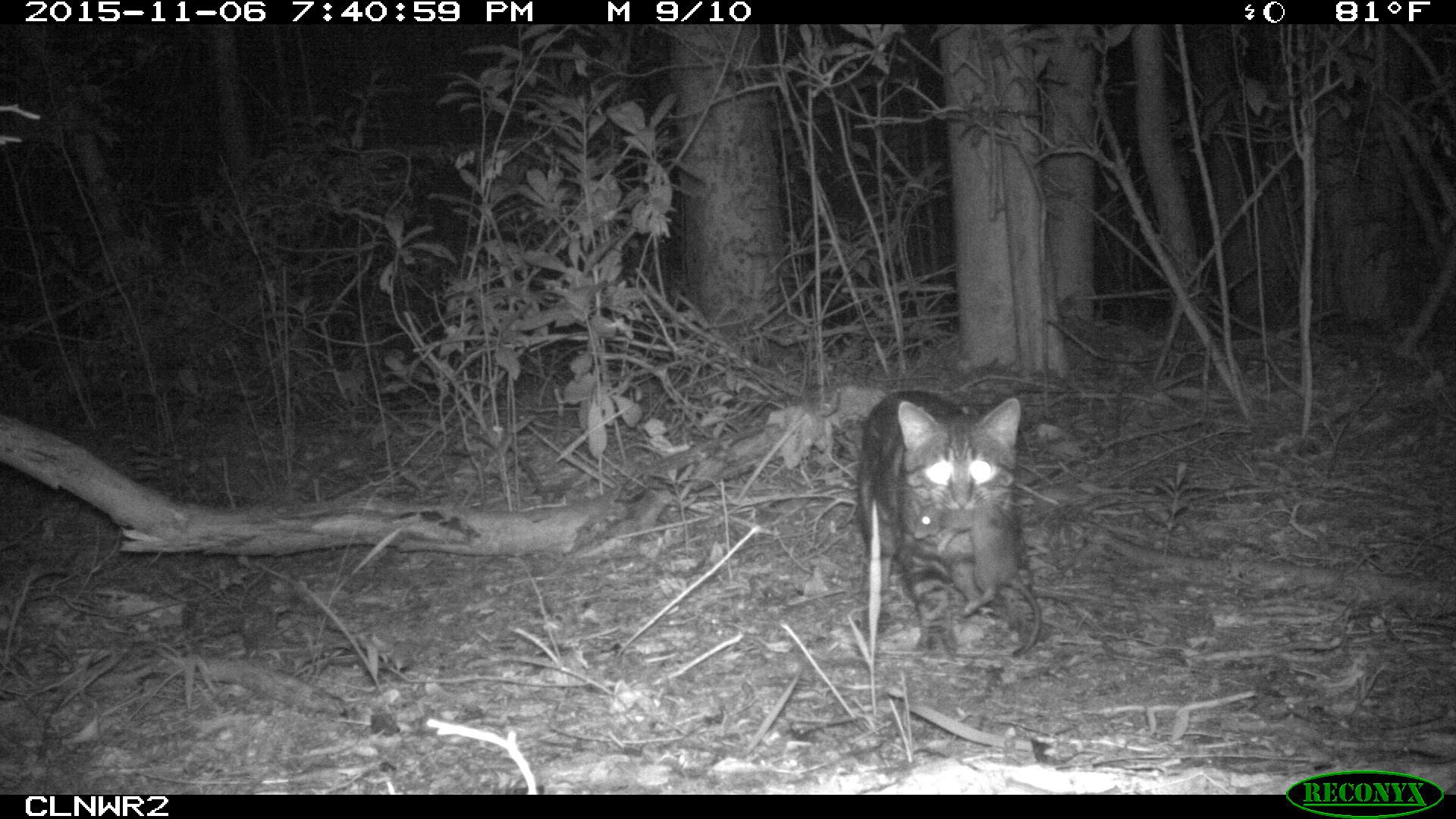
Because cat predation takes place mostly at night, it remained largely undocumented until tags of captive-breed woodrats released in the refuge, were found in buried woodrat innards. (Burying innards of victims is classic house-cat behavior.) Cementing the case were multiple camera images of cats carrying woodrats.
“We looked for 30 years, and no one could figure out why woodrats were declining,” says Clay DeGayner. “We didn’t know what was out there; but we sure found out when we started cat trapping. This was an eye opener for all of us.”
Finally, in December 2012, the USFWS published its “Integrated Pest Management Plan” for the Florida Keys, noting its legal mandate to remove cats from refuge lands and explaining that they “not only threaten wildlife through direct predation or competition, but also serve as vectors for a number of diseases including rabies, cat-scratch fever, hookworms, roundworms and toxoplasmosis. Some of these can be transmitted to…native wildlife, domestic animals and humans.”
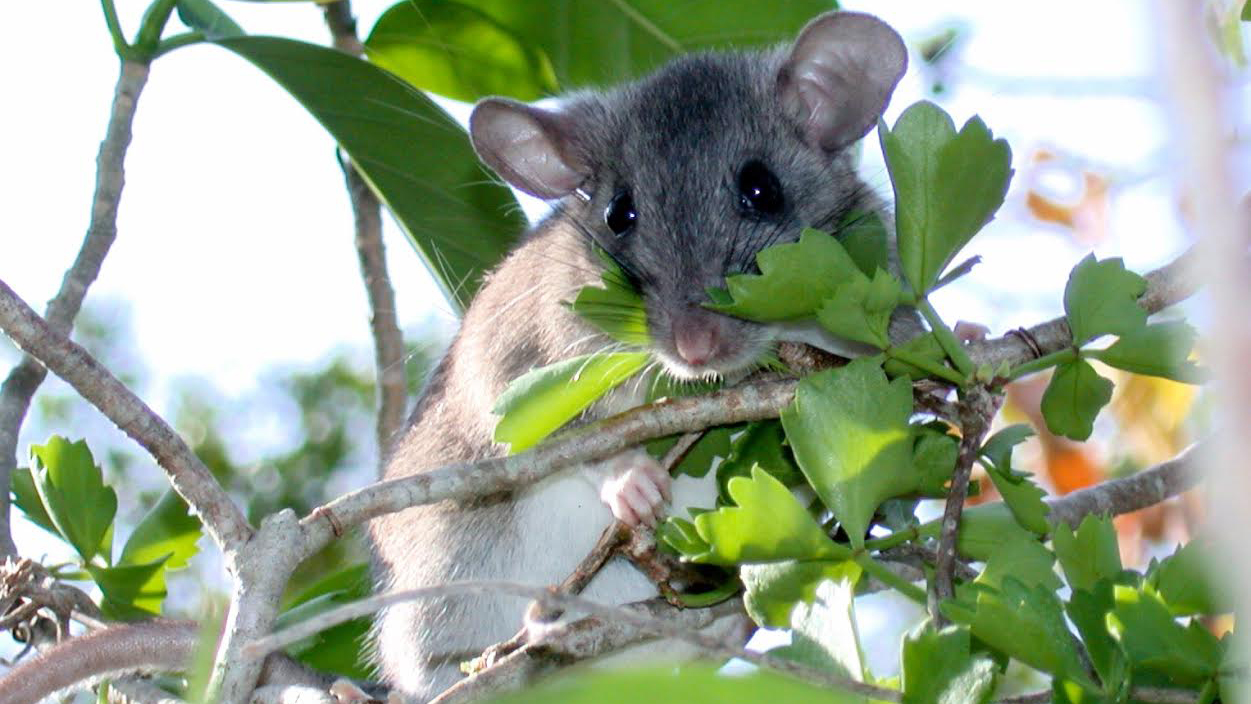
The following year Jeremy Dixon replaced Klett as refuge manager. As he soon discovered, cat control is politically challenging. But with it he emphasized outreach to cat advocates. “A lot of people just don’t know how destructive cats can be, especially on islands,” he declares. “But I think we’ve done a fairly good job at education.”
Trapped cats are taken to a shelter. The vast majority are feral; but if a pet is captured, it’s returned to the owner, provided it carries some form of identification or is claimed. A teachable moment ensues. If there’s a second offense, Dixon imposes a light fine, though this is rare.
Still, Dixon and the DeGayners — who do most of the cat trapping for the refuge — are excoriated for such imagined misdeeds as luring cats onto federal land the better to secretly kill them. A typical op-ed in Key West the Newspaper accused them of “unnecessarily abusing and butchering sentient creatures, while rehearsing warped and twisted rationalizations justifying the bloodshed.”
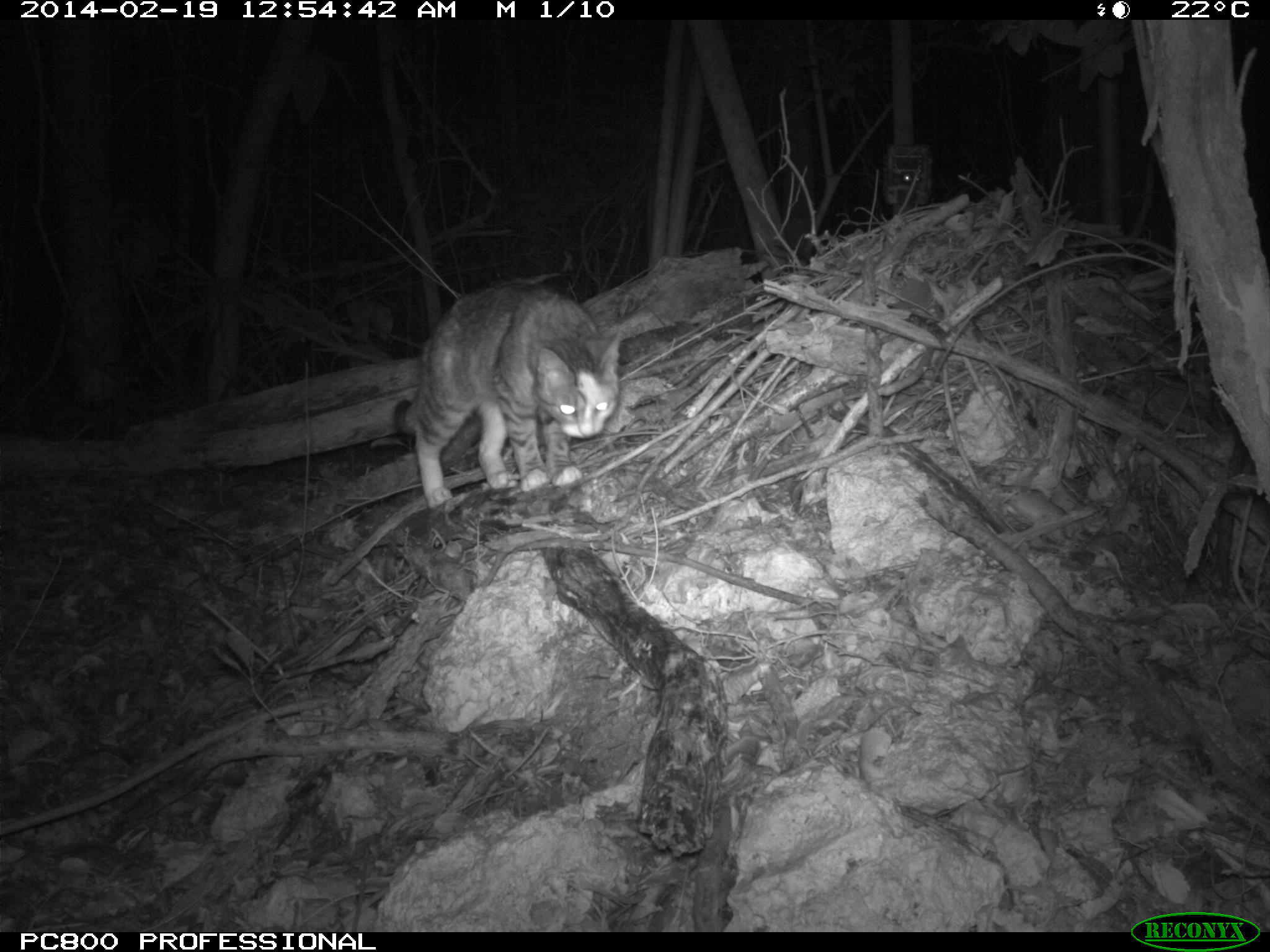
Live-trapping isn’t a perfect solution because some of the trapped cats get adopted and show up again. And feeding stations encourage abandonment of unwanted pets. Dixon finds cats from Miami-Dade County TNR colonies on the refuge. And David Ritz, administrator of the Ocean Reef Club, offers this: “We’ve adopted out hundreds of cats. Our cats’ ears are clipped. We know if a cat was ours; but we don’t know if it’s still ours.”
Keeping cats out of park and refuge is difficult. “We mainly catch possums and coons,” says Clay DeGayner. “A cat walks by, takes a look and never goes near a trap again. Free-ranging-cat lovers are a minority, but they still picket, try to intimidate us, follow us and disturb our traps.”
“Feral cats are directly responsible for many global extinctions, particularly on islands,” notes biologist Cheryl Millett, an invasive species specialist for The Nature Conservancy. “Science shows that cats hunt instinctively regardless of food need, preying on birds, small mammals, amphibians and reptiles. The effective role of feral cat control in biodiversity conservation has been increasingly documented. We support the Refuge staff in their decision to reduce the feral-cat population and recommend a long-term solution to the pet overpopulation issue by advocating for responsible pet owners with indoor cats.”
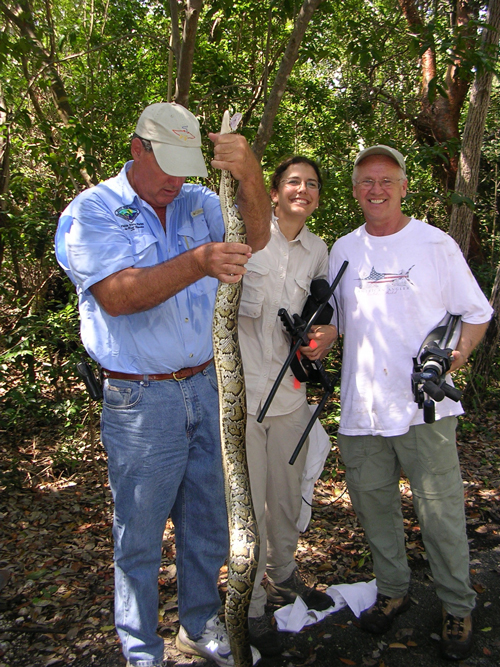
Despite the challenges of nonlethal cat control, cats have significantly decreased in woodrat habitat. And researchers report a simultaneous increase in native rodents, snakes and ground-nesting birds, especially Chuck-will’s-widows, common nighthawks and Key West quail-doves.
But Burmese pythons have reached Key Largo; and in 2007 a researcher found her radio-tagged woodrat in one along with an untagged woodrat. Politically at least, managers have a much easier time controlling these aliens. Few people want to maintain them in the wild; and few insist they not be euthanized.
Control of alien predators isn’t the only reason for the resurgence of Key Largo woodrats. Before agriculture and development flattened coral formations woodrats had crevices in which to escape predators, and they built their stick houses on these formations. Now woodrats are piling sticks around artificial foundations fashioned by managers from plastic culverts cut lengthwise to form a protective dome and then covered with coral fragments. The DeGayners have set up about 1,000.
From all the new sticks on the culverts it’s obvious that the Key Largo woodrat population is rapidly increasing. But delisting or even downlisting probably will never happen. Apparently the tiny range can’t be expanded; introductions of captive animals on two other keys have failed. And like all imperiled species native to these low islands, the woodrat is vulnerable to hurricanes and sea rise.
Still, the work of Dixon and the DeGayners is among the nation’s best examples of wildlife management gone right. Despite the ongoing dangers faced by the Key Largo woodrat, its chances for long-term survival suddenly appear bright.
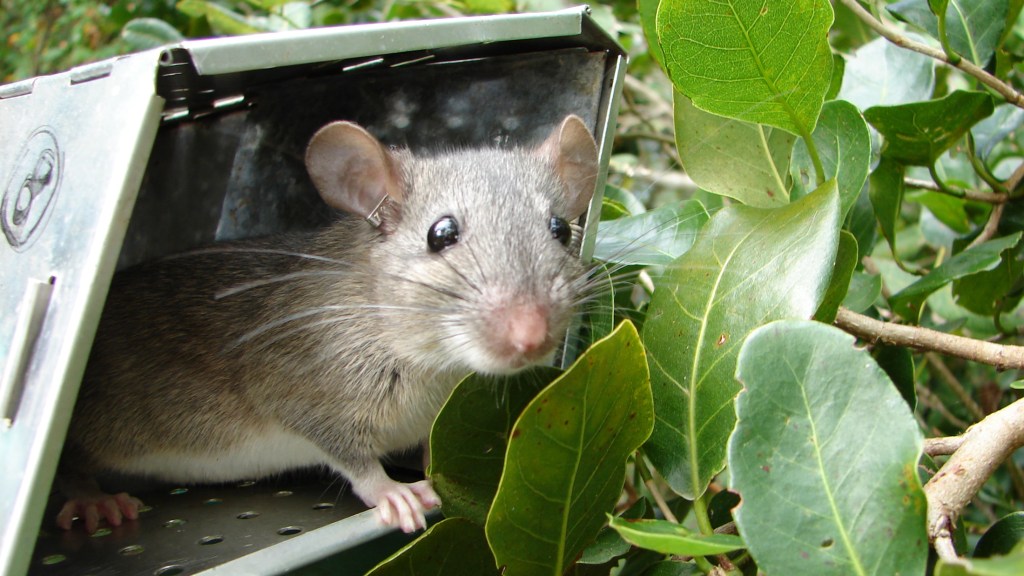



I’ve been trying to figure out how to get some information to people who live down in Florida. I heard a story from a guy up here in Tennessee about how his grandmother caught “chicken snakes” ie, black rat snakes. She would put a golf ball outside the chicken pen, and one just inside. A snake would come along, swallow the first ball, stick his head through the chicken wire, and swallow the 2nd one. Then he’d be stuck there till Grandma came along with her big sharp butcher knife to cut the snake in two and get the balls back to reset the trap.
Seems to me that a perfectly ordinary chain link fence with a croquet ball outside and one inside would make a perfect python trap for pythons of a certain size range. Dribble a little egg on them once a week. Or would the fence need reinforcing? At the very least, some of you Floridians could be testing this old technique to see if it can be further refined.
Some advantages: It’s a trap where the snake comes to it rather than the human having to go find the snake, so saves time and trouble. It allows average homeowners to help fix the problem. It is a selective trap that won’t catch alligators, birds, native snakes (which are too small to swallow croquet balls) or anything except pythons. Many traps in an area with daily monitoring would perhaps give a better idea of how many snakes are really out there. Or maybe it will only give some idea of the snake to prey ratio. Maybe after your local neighborhood python has eaten all the coons, possums, armadillos and cats, it will go for the fake eggs.
Think about it. Try it! And tell other people! Thanks!
Thank you for calling attention to the perseverance, innovation, careful work and, it seems, progress by USFWS’s Refuge Manager Jeremy Dixon and two of his very dedicated volunteers, DeGayner brothers Ralph & Clay. This recognition will be appreciated, especially by the refuge’s enthusiastic team of volunteers and other supporters. Your optimistic appraisal of the Key Largo woodrat’s chances for long-term survival (“suddenly bright”) is particularly encouraging, coming from a writer who has covered similar efforts many times, and seen first-hand the daunting challenges faced by those attempting to halt the slide of a species toward extinction.
Even knowing the source, I’m mystified and saddened by the, “No one who lives here has ever seen the almighty woodrat,” comment made by someone who apparently still cannot (or will not) see any correlation between rarity of the Key Largo Woodrat (and the also endangered Key Largo Cotton Mouse) and free-roaming house cats.
Regarding your suggestion, “… the public would fall in love with them (woodrats) the way it fell in love with, say, California’s inquisitive and highly visible island foxes,” color me “dubious.” When giving presentations, I’m no longer surprised when a photo of a snake, spider, mouse or rat, projected onto a screen, causes one or two in the audience to abruptly leave the room, while several others simply won’t look until I move on to my next slide image. It’s a visceral response some apparently cannot control. And, as for the difference between rats and mice, that only seems significant to biologists, Walt Disney, and other fans of Mickey.
P.S. If I may: regarding your trail post-NAS, I thing Michael Frome would approve.
Give money to shelters for spay and neuter, food and vaccines for cats that are adoptable. Get involved if you can. Colony living for cats is hard. Being a wild animal is hard. Talk to your local veterinarian and give money to a fund for people who have pets and have come on hard times. Then the vet can quietly use the money for the pets whose folks are kind, responsible folk that need a helping hand to spay or neuter or vaccinate their pet. There are ways to help with the feral problem that can be a solution rather than a band-aid. Please think on it.
Domestic cats are just that. They are not meant to be left on their own to fend for themselves. Food is not all that kitties need. I am familiar with the “colonies” of cats. It is wrong. If the folks that allow this would try and live like the feral cats live I believe they might reconsider.
Have you ever held a baby bunny or a baby squirrel? Do you like anoles lizards or baby birds learning to fly? All of the earth’s wild creatures have enough to contend with. Please think of the cats. Hot, cold cystitis, fleas, ticks, heartworms, kidney failure, warbles, fights, dogs, leukemia, cars, fear. Please, please.
Sincerely,
I love cats.